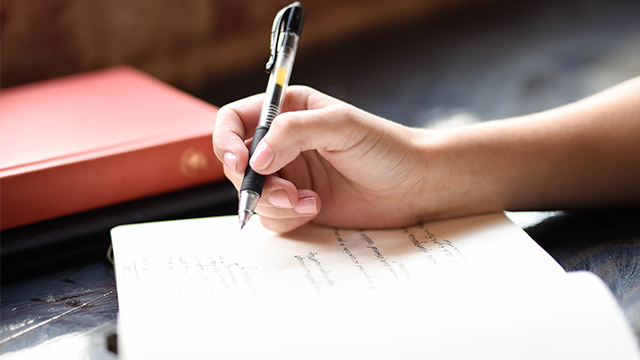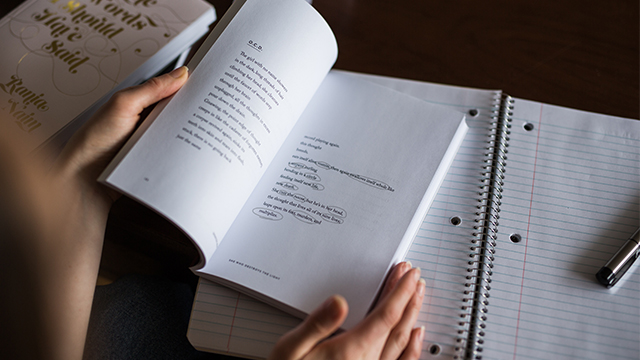How to Memorize Wordy Monologues for Performances
Written by Ashleigh Gardner
November 30, 2018
Almost everyone has had the nerve-wracking experience of having to memorize a monologue — a wordy monologue — for a show. Sometimes, you’ll have more than one monologue. Maybe you’ll be performing a one-man or one-woman show some day! You’ll need to know how to tackle such a task, and luckily, we’ve got some tips.
1. Write your monologue out by hand at least seven times.

It’s a proven method that writing your lines over and over and over helps you memorize them. Writing your lines repeatedly solidifies the words in your head and in your hands. If you speak your lines out loud while you write them, you’ll increase the chance of memorizing them sooner.
2. Circle or underline key words in your monologue.

If certain words trigger your memory for the next part of your monologue, then underline or circle them in your script so that you’ll have a visual reminder when you memorize. Underlining and circling specific words and phrases also helps you remember exact words and phrases instead of replacing written words with their synonyms or similar phrases.
3. Use a phone app like LineLearner or Off Book.

Sometimes, staring and staring at your script doesn’t do anything except give you a massive headache. Some people are visual learners (they learn by seeing words on the page repeatedly, especially if they have photographic memories), some people are kinesthetic learners (learning their lines better once blocking is established), and some people are auditory learners (they learn better by repeatedly hearing words). If you’re an auditory learner, try using an app like LineLearner (on Google Play and the App Store) or Off Book (on the App Store). Usually, these apps are used for scenes between two or more characters, but with monologues, you can record every other sentence as another character. You can switch between Character A and Character B to quiz yourself in the car, in the shower, or while you’re on a jog.
4. Analyze your monologues and identify each sentences’ objectives.

Lines are easier to memorize when you know the objectives behind them. Once you establish objectives, your brain will naturally connect with the scene, and the next line your character says will play that objective and the emotion that goes along with it.
5. Color code your monologue for emotional beats.

This method is quite possibly my favorite because it involves two methods at once — writing your monologues and analyzing objectives. Type your monologues out in a Word or Google Drive document (with the cue line before and the next line after), and then analyze the text for objectives while color-coding the words. (For example, if your monologue has a section in which the character is trying to make another person feel jealous, you might highlight that section green. If a section is trying to make another character feel appreciated, you might highlight this section yellow.)
Need some advice? We’ve got you covered.
- 5 Ways to Say “Thank You” to Your Cast and Crew
- 5 Character Development Techniques to Use in Rehearsals
- 5 Small Ways to Get Into (And Embrace) Your Character
- 5 Ways to Take Care of Yourself During Tech Week
- Devising Theatre: 7 Quick Tips for Your First Devising Project
- “I Can’t, I Have Rehearsal”: 5 Tips for Scheduling Your Life When You’re In Theatre
- How to Make Rehearsals A Warm and Welcoming Environment
- 10 Basic Rules of Stage Combat (That Keep Everyone Safe)
- 5 Advantages of Learning Stage Combat
- Theatre Artists on a Budget: How to Be Smart and Healthy While Pinching Pennies
- Productions on a Budget: Finding Props/Costumes/Set Dressings/Set Pieces Without Breaking the Bank
- 6 Steps to Memorizing Shakespeare
- 5 Helpful Tips for Attending Callbacks
- 10 Tricks to Staying Healthy All Season Long
- How to Balance Theatre and Coursework
- 10 Items Every Actor Should Carry in Their Rehearsal Bag
- 10 Items Every Dancer Should Keep in Their Rehearsal Bag
- Discover the Delightfully Nerdy World of Dramaturgy
